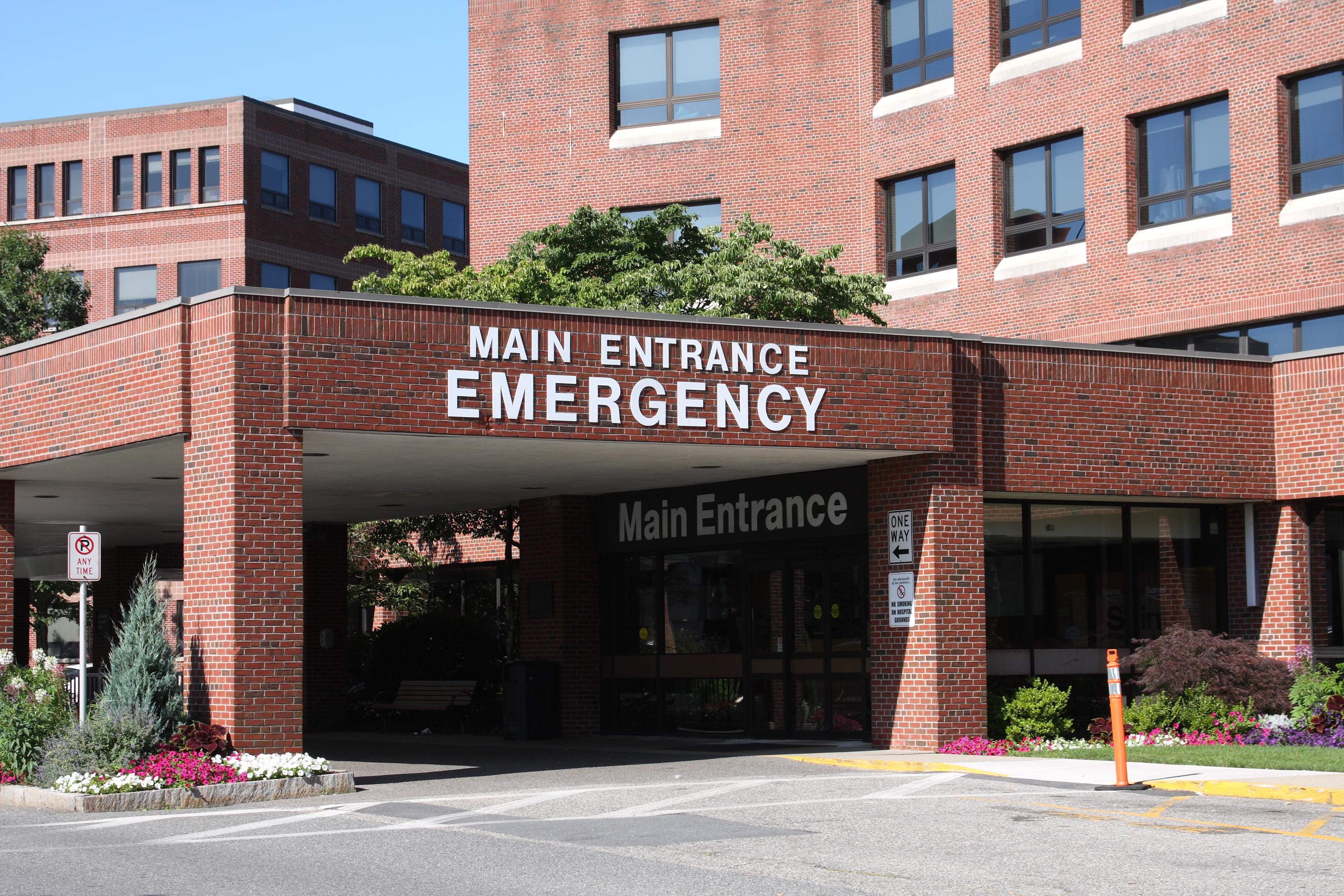
Finding the perfect fit in a doctor and hospital can sometimes be challenging. You've got to find the one that understands your concerns, doesn't just treat you like a number, and has you, your family and your community's best interest at heart. We understand that completely, that is why we’re so proud and excited to announce our 2019 Top Hospitals For Diversity List.
BDO is proud to present this list at our Top Hospitals for Diversity Health Equity Conference on October 30, 2019 in conjunction with the Rodham Institute at George Washington University in Washington, D.C. (For more information about the conference, please email Robert Ingram, [email protected])
Some of the determining factors that led to each hospital being put on this distinguished list include:
• Recognition of the institution among and by other leading hospitals
• Commitment to the American Hospital Association’s Equity of Care Pledge
• Recognized delivery of quality healthcare services
• Inclusive and diverse clinical and administrative staff
• Persons of color and women represented at the highest levels including the board of directors and senior-level executives
• Culturally competent medical and professional staff
• Significant investment and profile in community health programs and initiatives
These hospitals represent all regions of the United States. Each hospital on this distinguished list delivers quality care at the highest level while promoting equity and inclusion in their operations, programs, services, and staffing.
Here's the full list, listed by state, below:
California
Cedars-Sinai - Los Angeles, CA
Kaiser Permanente Los Angeles Medical Center - Los Angeles, CA
UC Davis Health System - Sacramento, CA
UCLA Medical Center - Los Angeles, CA
UCSF Medical Center - San Francisco, CA

Connecticut
Yale-New Haven Hospital - New Haven, CT
Florida
Baptist Hospital of Miami - Miami, FL
The list continues on the next page...
Download the 2019 Top Hospitals For Diversity eBook HERE
H. Lee Moffitt Cancer Center - Tampa, FL
Mayo Clinic - Jacksonville, FL
University of Miami Hospital - Miami, FL

Georgia
Emory University Hospital - Atlanta, GA
Piedmont Atlanta Hospital - Atlanta, GA
Illinois
Ann & Robert H. Lurie Children's Hospital - Chicago, IL
List continues on next page...
CommonSpirit Health - Chicago, IL
Loyola University Medical Center - Maywood, IL
Northwestern Memorial Hospital - Chicago, IL
Rush University Medical Center - Chicago, IL
University of Chicago Medical Center - Chicago, IL
Indiana
Indiana University Health - Indianapolis, IN
List continues on next page...
Kentucky
KentuckyOne Health - Louisville, KY
Louisiana
Ochsner Health System - New Orleans, LA
Maryland
Bon Secours Health System - Baltimore, MD
Johns Hopkins Hospital - Baltimore, MD
University of Maryland Medical System - Baltimore, MD
Massachusetts
Brigham & Women's Faulkner Hospital - Boston, MA
Dana-Farber Cancer Institute - Boston, MA
Massachusetts General Hospital - Boston, MA
The list continues on the next page...
 Michigan
Michigan
Beaumont Health - Royal Oak, MI
Henry Ford Health System - Detroit, MI
Trinity Health - Livonia, MI
University of Michigan Health System - Ann Arbor, MI
Minnesota
Mayo Clinic - Rochester, MN
Missouri
Barnes-Jewish Hospital - St. Louis, MO
New York
Memorial Sloan Kettering Cancer Center - New York, NY
Montefiore Medical Center - Bronx, NY
Mount Sinai Hospital - New York, NY
The list continues on the next page...
New York-Presbyterian Hospital-Columbia and Cornell - New York, NY
NYU Langone Medical Center - New York, NY
SUNY Downstate Medical Ctr. - Brooklyn, NY
North Carolina
Carolinas Healthcare System - Charlotte, NC
Duke University Hospital - Durham, NC
Novant Health - Charlotte, NC
Ohio
Cincinnati Children's Hospital Medical Center - Cincinnati, OH
Cleveland Clinic - Cleveland, OH
Nationwide Children's Hospital - Columbus, OH
The Ohio State University Wexner Medical Center - Columbus, OH
University Hospitals of Cleveland - Cleveland, OH
Pennsylvania
Allegheny Health Network - Pittsburgh, PA
Hospitals of the University of Pennsylvania-Penn Presbyterian - Philadelphia, PA
Thomas Jefferson Univ. Hospital - Philadelphia, PA
University of Pittsburgh Medical Center - Pittsburgh, PA
The list continues on the next page...
Tennessee
Methodist Le Bonheur Healthcare - Memphis, TN
Regional One Health - Memphis, TN
St. Jude Children's Research Hospital - Memphis, TN
Vanderbilt Medical Center - Nashville, TN
Texas
Baylor University Medical Center - Dallas, TX
Houston Methodist Hospital - Houston, TX
UT MD Anderson Cancer Center - Houston, TX
Memorial Hermann-Texas Medical Center - Houston, TX
Methodist Health System - Dallas, TX
University of Texas Southwestern Medical Center - Dallas, TX
Virginia
University of Virginia Health System - Charlottesville, VA

Washington, D.C.
George Washington University Hospital - Washington, DC
The list continues on the next page...
Medstar Georgetown University Hospital - Washington, DC
Wisconsin
AdvocateAurora Health - Milwaukee, WI
Froedtert Hospital - Milwaukee, WI
The need for diversity in health care grows as each year passes by. Don't believe us? Just ask Patricia Prelock, Ph.D., dean of the College of Nursing and Health Sciences at the University of Vermont.
“Interacting with a health care professional is such a personal relationship that it’s important that the provider you have understands the values and beliefs of the individual with whom they are working,” Prelock explains.
“The patients we’re serving now will look very different from the patients we’re going to be serving in 20 years,” she says. “If we don’t have the cultural context of the people we’re serving, we’re not going to be effective as
...health care professionals. It’s not just in medicine; it’s in nursing, speech pathology, physical therapy, radiation therapy – all the health professions.”
Consider these statistics from the U.S. Census Bureau:
- In 2043, the so-called “minority” populations will become the majority in the United States. However, no single group will make up a majority. The non-Hispanic white population will remain the largest single group. By 2060, “minorities” – meaning those who are not of white European descent – are projected to comprise 57 percent of the population, up from 37 percent today.
- By 2060, nearly one in three Americans will be Hispanic (the term used by the U.S. Census), up from one in six today. The Hispanic population will more than double, to 128.8 million.
- The percentage of black Americans will increase to 14.7 percent — 61.8 million — in 2060.
Asian Americans will double to 34.4 million in 2060, comprising 8.2 percent of the total population.
- The number of international migrants is expected to grow by 41.2 million.
- The U.S. population is aging. By 2060, the number of Americans age 65 and over is expected to double to 92 million. - Those 85 and older will make up 4.3 percent – 18.2 million — of the overall population.
- Nursing, health and medical schools across the country – including those at UVM — are working to recruit students and faculty of color to ensure that health care professionals better reflect the patients they serve.
Nursing, for example, traditionally has been composed of middle-aged white women but has slowly seen changes in the makeup of the workforce. According to the AFL-CIO’s Department for Professional Employees, the average age of nurses has...
... increased over the past 15 years from 39 to 43, but younger people are increasingly joining the profession. Many of them are racially and ethnically diverse. In addition, the number of male nurses has increased.
And although the number of white, non-Hispanic nurses hovers around 70 percent, younger graduates of nursing schools are getting plenty of training in learning how to work with patients from a variety of backgrounds. In academic lingo, it’s called “cultural competency,” a term that is becoming much more commonly used as schools, universities, workplaces, governments and other organizations work to ensure they better serve their ever-changing communities.
“In the standards from our accrediting bodies that guide our curriculum, in our learning outcomes and performance competencies, we work to infuse cultural and linguistic diversity. It’s part of everything we do,” Prelock notes.
That means that even though UVM may require all undergraduate students to take six credits in courses covering diversity issues, the College of Nursing and Health Sciences also makes sure that students get the chance in all classes related to patient care to consider ways to better serve patients who are different from them: different religions, races, ethnicities, sexual orientations, genders, abilities, ages and more.
Yet, even with all this, health disparities remain.
Across the country, health care experts explain yet another reason why it’s important for students and professionals to study and understand cultural diversity: to reduce health disparities.
“Missing Persons: Minorities in the Health Professions,” a report from the Sullivan Commission on Diversity in the Healthcare Workforce, an initiative of the W.K. Kellogg Foundation, goes so far to state: “The fact that the nation’s health professions have not kept pace with changing demographics may be an even greater cause of disparities in health access and outcomes than the persistent lack of health insurance for tens of millions of Americans.”
The U.S. Agency for Healthcare and Research Quality, a division of the U.S. Department of Health and Human Services, measures these health disparities annually. It recently noted that the “overall health of the American population has improved over the past few decades, but not all Americans have benefitted equally from these improvements. Minority populations, in particular, continue to lag behind whites in a number of areas, including quality of care, access to care, timeliness, and outcomes. Other health care problems that disproportionately affect minorities include provider biases, poor provider-patient communication, and health literacy issues.”
“It does make a difference,” Prelock says, “if you receive health care from a person who represents you, someone, with whom you can connect at a different level.”








